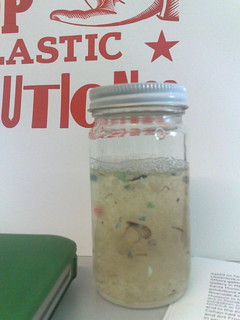"Once there was the Stone Age, then the Bronze Age, and now we are in the middle of the Plastic Age," said teenager Boyan Slat. "Every year, we produce 300 million tons of plastic. Much of it reaches our oceans."
At 16 years of age, Dutchman Boyan Slat scuba dived off Greece in the Mediterranean Sea to see more debris floating on and under the surface.
He said, "At first, I thought I was swimming through strange jellyfish. Instead, I swam through more plastic bags than fish."
Seeing all the ocean trash, he asked himself, "Why not clean it up?"
Slat quit his Aerospace Engineering studies to create www.TheOceanCleanup.com in order to fund his research on how to pick up all the plastic trash floating on the oceans of the world. Researchers discovered that 46,000 pieces of plastic float on every square mile of Earth's oceans. That plastic debris stems from billions of humans around the planet tossing their plastic into rivers, streams and directly into the oceans. Thousands of ships, boats and luxury cruisers toss millions of pieces of plastic day in and day out across the globe. Plastic does not break down. It oxidizes slowly into smaller pieces, but it never degrades.
Today, we find plastics in the tissue of birds, fish, whales, turtles, dolphins and just about every creature that feeds in the world's oceans. Plastic debris constitutes a biological nightmare whose consequences reach decades into the future.
Additionally, with the five major gyres revolving in the oceans of the world, in excess of 100,000,000 (million) tons of plastic gather in giant ocean-going garbage patches. You may Google "The Great Pacific Garbage Patch" the size of Texas in the Pacific Ocean 1,000 miles off the coast of San Francisco. It grows from 60 to 90 feet deep in places. It kills millions of sea birds, turtles, sharks, dolphins and whales.
(Note: You can view every article as one long page if you sign up as an Advocate Member, or higher).






